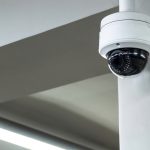The Top IP Camera Trends for Business Owners to Know
IP camera security systems have become a crucial security tool for businesses of all sizes. Monitoring any area of your business premises in real-time, day or night, provides immense peace of mind for business owners. Even better, IP cameras offer a range of features that create a go-to premises security tool.
From AI-driven analytics to cloud-based storage solutions, there’s plenty to consider regarding the future of IP camera security systems.
The Rise of AI and Analytics in IP Camera Security Systems
Talk about AI is everywhere with the rise of machine learning and deep learning systems. AI-enabled cameras can recognize objects and people, detect changes in behavior or movement patterns, and even alert you to potential threats before they happen.
This new generation of cameras also features analytics software that can automatically evaluate footage and generate valuable insights, making managing your security systems easier. These analytics can help identify potential threats, track and analyze visitor patterns, and provide essential data on who is coming and going from your building.
Facial recognition, a technology still in its infancy and has a limited capacity, is moving towards a point where it can quickly and accurately identify people who have been on your cameras before, alerting you to potential threats before they even enter your building. Threat detection is vital for high-security businesses like banks, where facial recognition technology can be critical to keeping customers and employees safe.
Video analytics can track customer behavior, identify hot spots and bottlenecks in your building, and make data-driven decisions about improving your operations.
Of course, you must also consider customer and employee privacy laws when instituting AI-driven IP camera security systems.
Increased Focus on Cybersecurity for IP Camera Systems
With the increased use of IP cameras for surveillance purposes, businesses must be aware of the potential security risks of this technology. As more companies rely on IP cameras to protect their assets, the risk of a cyber attack grows exponentially, particularly with cloud-based systems that IP camera security systems favor.
IP camera manufacturers have been developing security measures to enhance their cameras’ safety. These measures include encryption, password protection, and multi-factor authentication. Choose IP cameras incorporating these features to safeguard your security system from potential threats.
Regularly update firmware and software for IP cameras. Software updates not only fix known security vulnerabilities but also improve the camera’s functionality. In addition, change the default passwords to unique and robust passwords to minimize the risk of a security breach.
When installing IP camera security systems, keeping the network infrastructure secure is essential. One effective way to accomplish this involves a separate network dedicated solely to the IP camera system. We highly recommend segregating your security network from the primary network used by employees and customers. Remember, any device connected to the internet has the potential to be hacked, so you should always take extra precautions.
AI cybersecurity software is entering the market and offers robust security protections. However, you need to be aware that cybersecurity threats are already using AI to try to hack into computer systems in a cat-and-mouse chess game.
Integration with Other Security Systems for Better Protection
In the past, IP cameras were seen as a standalone solution for building security. However, today’s business owners demand more comprehensive protection for their properties, which means integration with other security systems. The integration allows for a more unified security approach that enables sharing of data and information across different security devices and platforms.
For example, IP cameras can integrate with access control systems, which provide a way to control who can enter specific areas of a building. By combining these systems, businesses create an audit trail of all people who access their property.
Another standard integration comes from intrusion detection systems, which can detect and alert security personnel when someone attempts to breach a building. IP cameras have the technology to visually verify the threat and provide additional details for faster response times.
Integrating security cameras with fire and life safety systems allows you to provide critical footage to help first responders assess the situation and develop a response plan.
When monitoring the security system comes from a central point, either physical or virtual, it gives your security response team the information it needs to make critical decisions quickly.
Enhanced Video Quality and Resolution
One of the most important aspects of any IP camera system is the video quality and resolution. Business owners want to clearly see what is happening in and around their building at all times. Fortunately, IP camera security systems have advanced rapidly in recent years, and video quality and resolution have improved dramatically.
Higher resolution cameras, such as 4K and even 8K, are becoming increasingly common. These cameras provide amazingly clear and detailed pictures, crucial to identifying potential security threats or investigating incidents after the fact. With the increased storage capacity and the use of H.265 compression, it’s now possible to store much more video footage at these higher resolutions without overwhelming your system’s storage capacity or your cloud-based storage system.
Another trend in IP cameras is wide dynamic range (WDR) technology. This feature balances out the lighting in a scene, allowing you to see both dark and light areas more clearly. Consider this technology for areas with strong backlighting, such as near windows or doors.
Some cameras also have low-light capabilities, which is important for businesses that operate at night or in low-light environments. These cameras are designed to provide a clear picture even in near-complete darkness. Of course, it also offers better visuals at night when it’s dark.
Modern IP cameras now come equipped with image stabilization technology, which helps to reduce blurring caused by camera movement or vibrations. If you have areas with high levels of foot traffic, where the camera may be bumped or jostled frequently, you’ll need this type of camera.
Mobile App Integration for Easy Access and Monitoring
One of the key benefits of mobile app integration is that it allows business owners to check on their buildings even when they’re not physically present. With a mobile app, users can log in to their IP camera systems and view live or recorded footage from anywhere in the world. If you have multiple locations or plan to be off-site for extended periods, this feature is handy.
You’ll receive alerts when the system detects motion or the camera sees an unusual event. Your team can address potential security threats promptly if necessary. You can set the parameters for detecting motion or an object, which is helpful for a camera facing an outdoor property to distinguish between a raccoon or squirrel and a human being.
Features such as pinch-to-zoom and swipe-to-pan make it simple for users to navigate the app, while push notifications ensure they’re always aware of what’s happening in their building.
Some mobile apps also allow for two-way communication, enabling users to talk directly to individuals in their building via the IP camera system. Think about enstances in which a delivery driver arrives and needs access to a restricted area or if an employee forgets their keycard and needs to be let in.
Smaller Form Factor IP Cameras for Discreet Installation
IP camera installation must balance the building’s aesthetics with the right spot to put the camera. No business owner wants cameras that are big, bulky, and unsightly. That’s why smaller form factor IP cameras are becoming increasingly popular.
IP camera manufacturers have been able to significantly shrink their cameras’ size without compromising their functionality. These cameras are small enough to be mounted in discreet locations, making them ideal for areas where aesthetics are a concern.
Some models can fit into the palm of your hand. They’re also lightweight, making them easy to mount and adjust as needed. Their size and weight make them easier to install and maintain, reducing installation costs.
Smaller IP cameras are less intrusive and less likely to attract unwanted attention. With discreet installation, people are less likely to notice them, allowing for better surveillance without drawing too much attention to the cameras themselves.
Smaller IP cameras also have a lower profile, making them less vulnerable to tampering and vandalism. With fewer moving parts and exposed components, they’re less likely to be targeted by intruders looking to disable them. Additionally, some smaller cameras are designed to blend in with their surroundings, making them virtually invisible to the naked eye.
Hire the Right IP Camera Installer From Day One
The team at CKC Data Solutions has the knowledge and expertise to install an IP camera security solution for your facility, whether you have 10,000 or 10 million square feet.
Contact us or call (417) 812-5251 to start the conversation.




